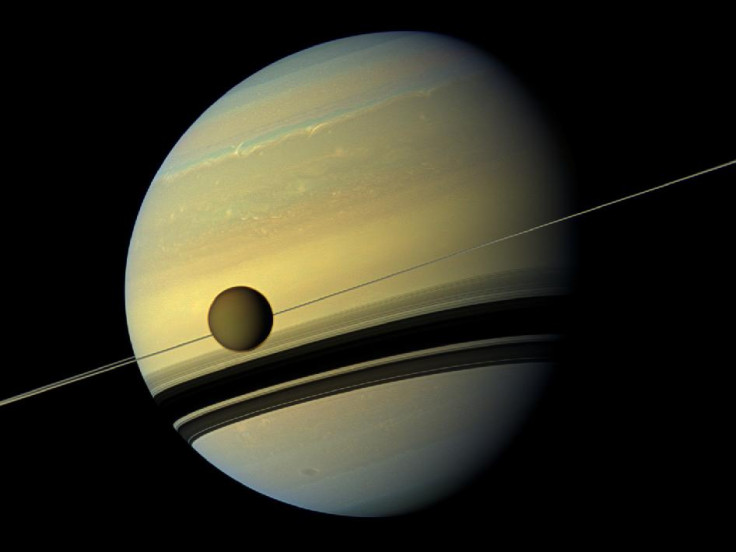Nasa's Cassini Spots 'New Icy Moon' Called Peggy Forming Within Saturn's Rings

Nasa's Cassini spacecraft has spotted what scientists believe is a new moon forming within the rings of Saturn.
Called Peggy, the 'new moon' is a small icy object that sits on the very edge of Saturn's A ring, the outermost of the planet's rings.
Images taken by Cassini on 15 April last year show disturbances in this area of the planet, with one showing an arc that is about 20% brighter than its surroundings. The arc is 750 miles long and six miles wide.
Published in the journal Icarus, the researchers believe this arc was caused by the gravitational effects of a nearby object.
The object has been informally named Peggy and is too small to be seen in images at present. Nasa scientists do not believe it will grow any bigger and may even be falling apart.
However, its discovery greatly enhances the understanding of how Saturn's icy moons, including Titan and Enceladus. They say it shows these moons could have formed in much more massive rings long ago, while providing an insight into how other planets, such as Earth, may have formed and migrated away from the Sun.

At present, the scientists estimate Peggy is probably no more than around half a mile in diameter.
Lead author Carl Murray, from Queen Mary University in London, said: "We have not seen anything like this before. We may be looking at the act of birth, where this object is just leaving the rings and heading off to be a moon in its own right."
The new moon formation fits with a recent theory that icy moons formed from ring particles within Saturn's rings, then moved outwards and merged with other moons also making their exit.
Cassini will move closer to the outer edge of ring A in late 2016, when it will have the opportunity to study the icy object in more detail, and potentially photograph it.
It is also likely the last chance to see a moon forming. Scientists believe Saturn's rings are now too depleted to make more moons, and the process will not be observed again.
"The theory holds that Saturn long ago had a much more massive ring system capable of giving birth to larger moons," Murray said. "As the moons formed near the edge, they depleted the rings and evolved, so the ones that formed earliest are the largest and the farthest out."
© Copyright IBTimes 2025. All rights reserved.






















